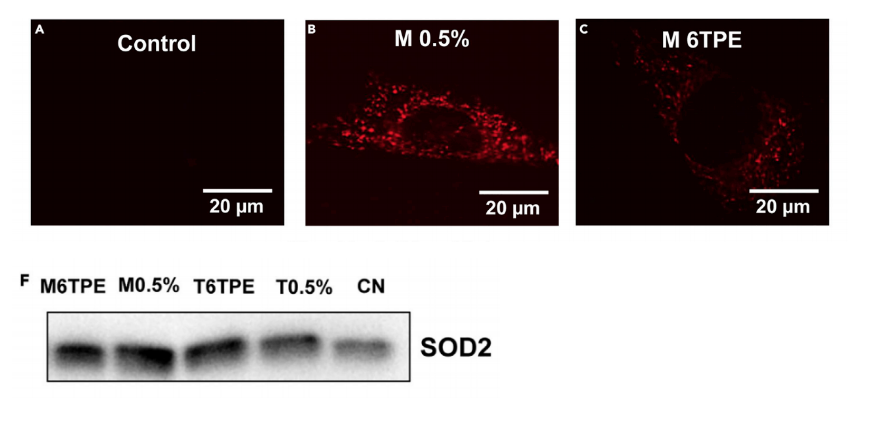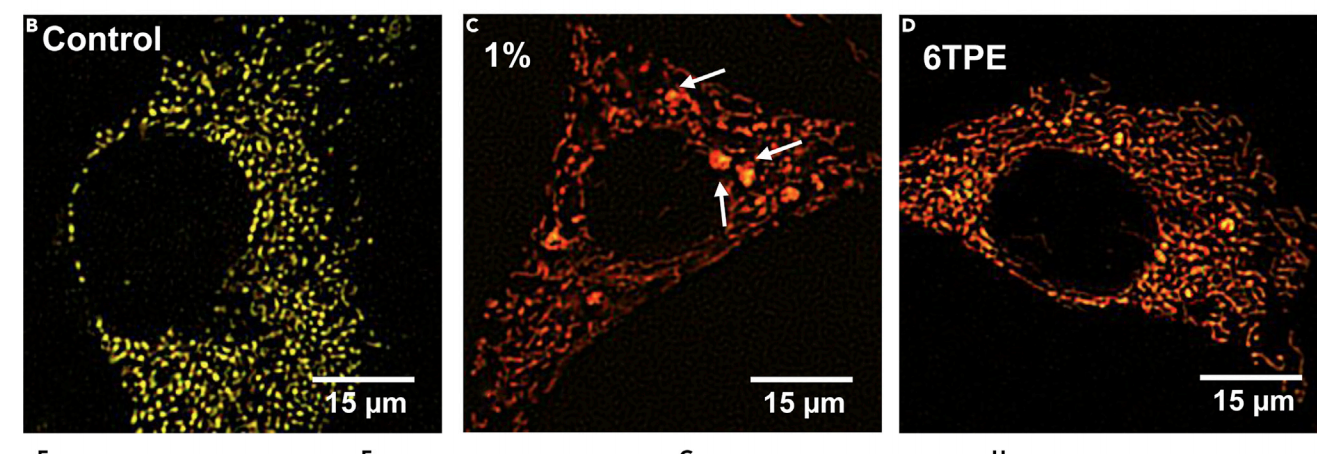61 5.7: Mitochondrial Superoxide Levels and Protein Oxidation
Electronic cigarette E-liquid and aerosol treatment groups both cause an increase in superoxide levels, which can be visualized using fluorescent MitoSOX red dye. Furthermore, ROS (reactive oxygen species) can induce antioxidant responses and are elevated in both treatment groups. This elevation can be visualised using mitochondrial enzyme superoxide dismutase 2 (SOD2). The MitoSOX fluorescence persists despite periods of recovery which suggests that elevated superoxide levels and ROS is not readily reversible (Zahedi et al., 2019).

Fluorescent MitoTimer reporter can be used to assess the levels of protein oxidation in both treatment groups. An increase in red fluorescence and the red/green fluorescent ratio shows that the treatment groups experience increased ROS levels and therefore increased protein oxidation.

Key Takeaways
- Increased ROS levels result in increased superoxide production and protein oxidation
- Experiments involving E-liquid and aerosol treatment groups demonstrate this effect
